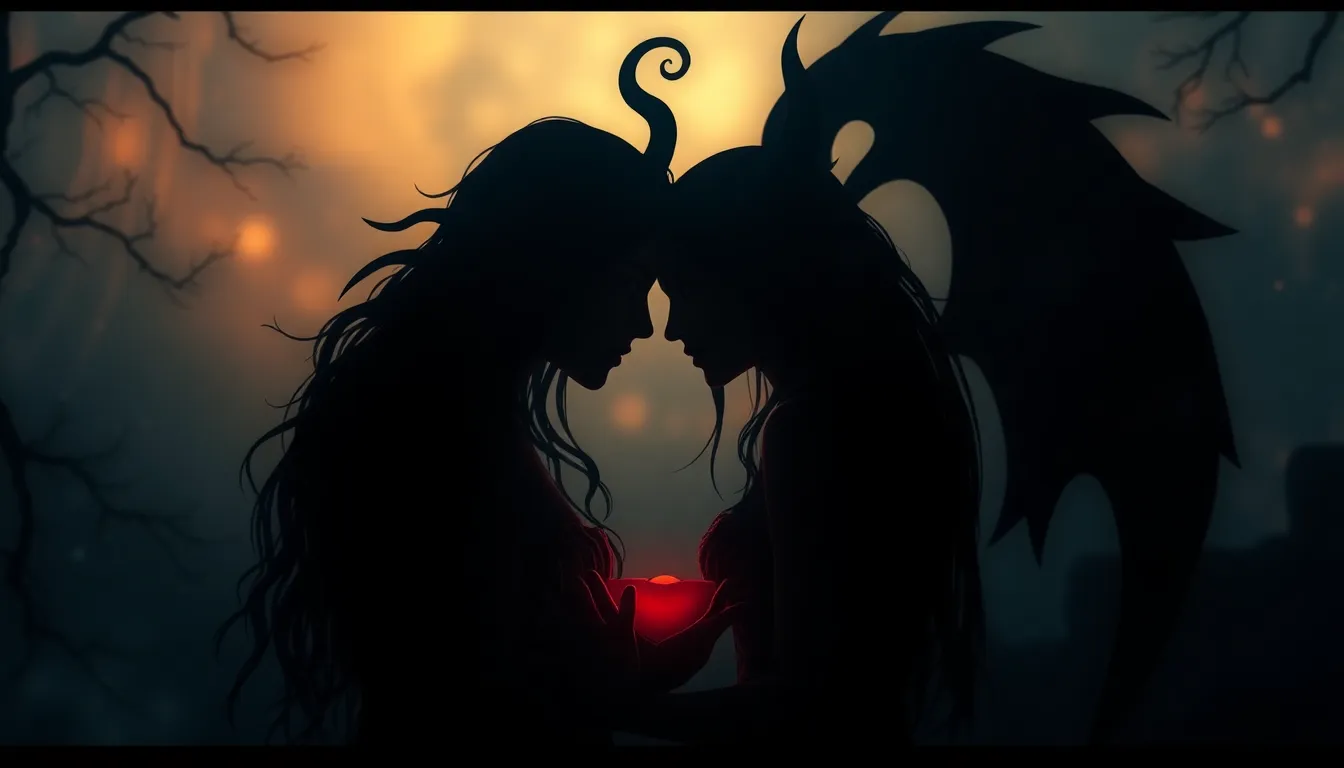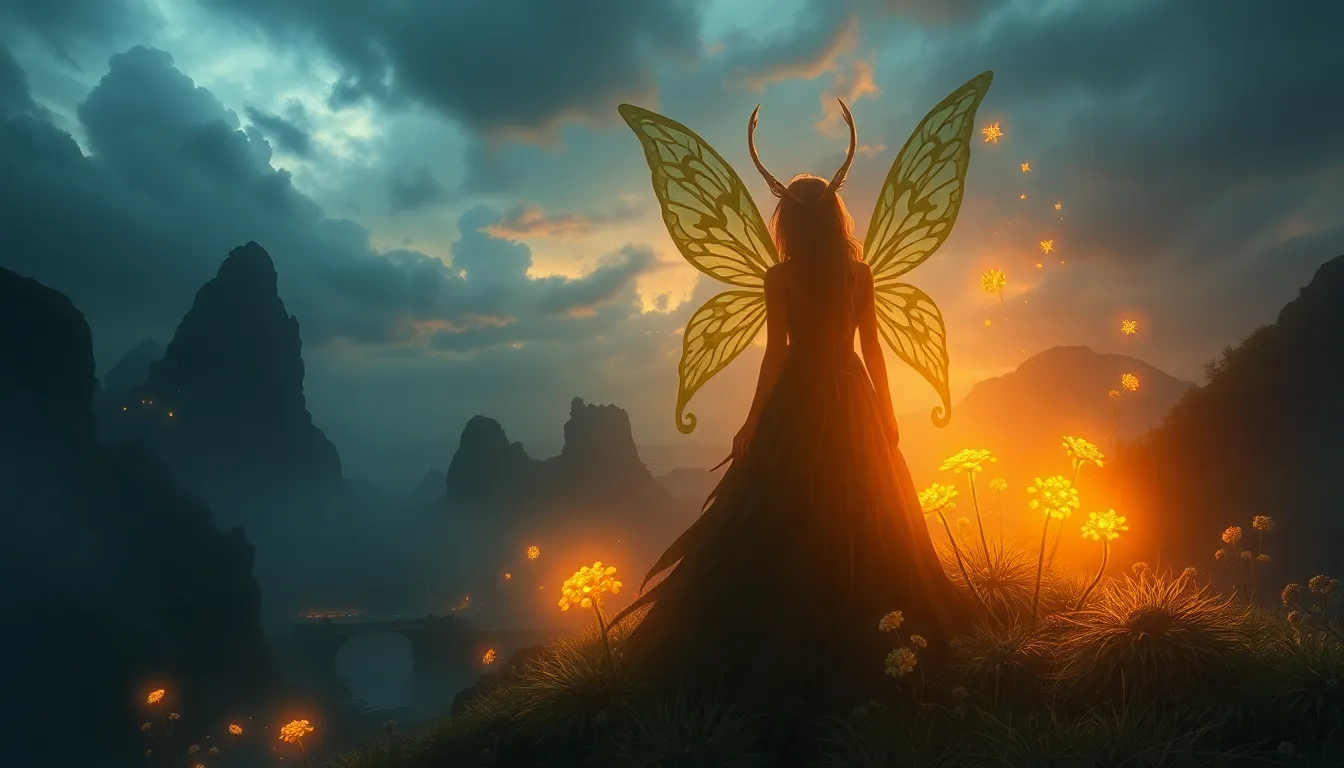The Huldra’s Redemption: Exploring the Spirit’s Capacity for Love and Compassion
I. Introduction
The Huldra, a captivating figure in Scandinavian folklore, embodies a complex blend of beauty, mystery, and danger. Often depicted as a beautiful woman with a cow’s tail, the Huldra enchants those who encounter her, yet her stories are often tinged with caution. Exploring the themes of love and compassion within the context of the Huldra’s narrative not only deepens our understanding of this mythical being but also highlights the universal human experiences of connection and empathy.
This article aims to delve into the Huldra’s origins, characteristics, and the profound lessons her stories offer about love and compassion. By examining her dual nature, her experiences of isolation, and her transformative powers, we can uncover the enduring relevance of the Huldra in both folklore and modern society.
II. The Huldra: Mythical Origins and Characteristics
The Huldra has roots in Norse mythology, with tales of her existence dating back centuries. Traditionally, she is associated with the forests and mountains of Scandinavia, serving as both a protector of nature and a seducer of men. The historical context of the Huldra is rich with themes of nature, femininity, and the supernatural.
A. Historical context of the Huldra in Scandinavian folklore
In folklore, the Huldra is often portrayed as a guardian of the woods, embodying the spirit of nature itself. Her stories have been passed down through generations, reflecting the cultural values and beliefs of the societies that created them. The Huldra’s character can be seen as a representation of the duality of nature—both nurturing and destructive.
B. Physical and spiritual traits of the Huldra
Physically, the Huldra is described as extraordinarily beautiful, with long flowing hair and an enchanting voice. However, her defining feature is the cow’s tail that signifies her true nature. Spiritually, she is viewed as a being of great power, capable of both love and vengeance, depending on how she is treated by humans.
C. The dual nature of the Huldra: allure and danger
The allure of the Huldra is undeniable, drawing men into the forest with promises of love and companionship. Yet, her tales often serve as warnings of the consequences of obsession and desire. This duality creates a complex character that reflects the dangers of romanticizing the unknown.
III. The Huldra as a Symbol of Loneliness and Isolation
While the Huldra is often seen as a seductress, her existence is also marked by profound loneliness. Living in isolation deep within the forests, she embodies the struggles of those who feel disconnected from the world.
A. Examination of the Huldra’s existence in nature
The Huldra’s solitude is a key aspect of her character. She resides in the remote wilderness, away from human society, highlighting the theme of isolation that resonates in many folklore traditions. Her connection to nature is both a source of strength and a cause of her loneliness.
B. The impact of solitude on the Huldra’s character
This solitude shapes the Huldra’s personality, leading her to crave companionship and understanding. The more she is shunned or misunderstood, the more her character reflects the pain of isolation, making her a sympathetic figure despite her dangerous allure.
C. Cultural reflections on isolation in folklore
The theme of isolation is prevalent in many cultures’ mythologies, often representing the human condition’s struggles. The Huldra serves as a reminder of how isolation can lead to desperation and a longing for love and connection.
IV. Love and Compassion: The Huldra’s Transformative Powers
The narrative of the Huldra is not solely about danger; it also encompasses themes of love and compassion. Her interactions with humans often reveal her capacity for empathy and understanding.
A. Stories of Huldra encounters that illustrate compassion
- In some tales, the Huldra assists lost travelers, guiding them safely home, showcasing her nurturing side.
- Other stories depict her falling in love with a human, leading to transformative experiences for both characters.
B. The role of love in the Huldra’s redemption arc
Love serves as a catalyst for the Huldra’s transformation. When treated with kindness, she reveals her true, compassionate nature, often leading to redemption for both herself and those around her. This aspect of her narrative reflects the power of love to heal and redeem.
C. Comparisons with other mythical beings and their capacity for love
Similar to other mythical beings such as the Selkie or the Dryad, the Huldra’s stories often revolve around themes of love and transformation. These comparisons highlight a common thread in folklore: the capacity for love to transcend boundaries and bring about change.
V. Modern Interpretations and Representations of the Huldra
In contemporary literature and media, the portrayal of the Huldra has evolved significantly. Modern interpretations often seek to explore her character beyond the traditional narratives, offering new insights into her story.
A. The Huldra in contemporary literature and media
Today, the Huldra appears in various forms of media, including novels, films, and even video games. These representations often emphasize her complexity, exploring themes of identity, belonging, and the struggle for connection.
B. Shifts in the portrayal of the Huldra’s character
Unlike earlier depictions that focused on her danger, modern portrayals often highlight her vulnerability and capacity for love. This shift reflects a broader societal change towards understanding and empathy, allowing audiences to connect with her on a deeper level.
C. The relevance of the Huldra’s story in today’s society
The Huldra’s narrative resonates with contemporary issues of loneliness and the search for connection. In a world where many feel isolated, her story serves as a powerful reminder of the importance of empathy and understanding in our relationships.
VI. The Huldra’s Lessons on Empathy and Understanding
The Huldra’s story offers valuable lessons on empathy and compassion that are relevant in our modern lives.
A. What the Huldra can teach us about compassion in human relationships
The Huldra’s experiences reflect the importance of kindness and understanding in forging connections. Her narrative encourages us to look beyond appearances and recognize the shared humanity in others.
B. The importance of empathy in overcoming fears and misconceptions
By understanding the Huldra’s story, we can confront our fears and misconceptions about those who are different from us. Empathy can bridge gaps and foster stronger relationships.
C. Historical and modern examples of empathy inspired by folklore
Folklore often contains stories of compassion that inspire individuals to act with kindness. From the tales of the Huldra to modern-day narratives, these examples highlight the enduring power of empathy.
VII. Conclusion: The Enduring Legacy of the Huldra
In summary, the Huldra’s narrative is a rich tapestry of love, compassion, and the struggle against isolation. Her character serves as a reminder of the complexities of human emotions and relationships.
The Huldra occupies a significant place in the modern cultural landscape, embodying themes that resonate deeply with contemporary audiences. As we continue to explore her story, we uncover the ongoing relevance of her experiences and the lessons they impart about love and understanding.
VIII. Further Reading and Exploration
For those interested in delving deeper into the world of the Huldra and related folklore, the following resources are recommended:
- Books: “Norse Mythology” by Neil Gaiman, “The Complete Folk and Fairy Tales of A. N. Afanas’ev” by A. N. Afanas’ev.
- Articles: Academic papers on Scandinavian folklore and its impact on modern literature.
- Online Resources: Websites dedicated to mythological studies and folklore analysis.
In closing, readers are encouraged to explore their interpretations of the Huldra’s narrative, considering how her story reflects their own experiences and the universal quest for connection and understanding.



